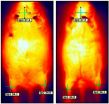(Press-News.org) MAYWOOD, Il. - Each year, as many as 500,000 Americans experience mini strokes called transient ischemic attacks (TIAs).
Symptoms quickly go away, usually within an hour, and many people don't seek treatment. But 10 to 15 percent of people who experience TIAs will experience full-blown strokes within three months, and 40 percent of these strokes will occur in the first 24 hours, according to an article by three Loyola University Medical Center neurologists in the journal Expert Review of Neurotherapeutics.
Rapid evaluation and treatment of TIA patients, either in the emergency room or in specially designed TIA clinics, can reduce the risk of subsequent strokes, according to authors Farrukh Chaudhry, MD, Jose Biller, MD and Murray Flaster, MD, PhD.
A TIA is caused by a temporary blockage, typically a blood clot, in a blood vessel in the brain. Symptoms are similar to that of a stroke, including numbness or paralysis on one side of the body, vision changes, trouble speaking, difficulty with balance or walking, sudden severe headache, etc.
Blood clots that trigger TIAs can arise from atherosclerosis (hardening of the arteries), heart attacks and abnormal heart rhythms.
Advances in imaging techniques such as MRIs have improved diagnostic accuracy in patients. And rapid treatment following TIAs can reduce the risk of stroke by about 80 percent, according to two studies, one in Britain and one in France. These studies "are suggestive but not fully conclusive," the authors write. "Better study designs are needed to prove this vital point."
A 2006 study in the journal Stroke found that only 44.1 percent of TIA patients – mostly those with motor symptoms – seek medical attention. "One factor may be minimization or ignorance on the part of TIA patients, relatives and friends, or on the other hand, under-diagnosis or under-prioritization by physicians," Chaudhry, Biller and Flaster write.
And even when patients do seek treatment and are correctly diagnosed, some may resist hospitalization because their symptoms have gone away.
Factors that help predict whether a TIA patient is at especially high risk for subsequent stroke include age over 60, high blood pressure, weakness on one side of the body, isolated speech difficulties, diabetes and symptoms lasting an hour or more.
Chaudhry is a stroke fellow, Biller is a professor and chair and Flaster is an associate professor in the Department of Neurology of Loyola University Chicago Stritch School of Medicine.
### END
Mini stroke symptoms quickly fade, but patients remain at risk
10 to 15 percent will suffer full strokes within 3 months
2013-02-05
ELSE PRESS RELEASES FROM THIS DATE:
Survey reveals fault lines in views on climate change
2013-02-05
Climate change is a hotly debated issue among many scientists, but a new study published by a University of Alberta researcher notes that geoscientists and engineers also become embroiled in the issue—and for some, it can get surprisingly personal.
Lianne Lefsrud, a PhD student in the Alberta School of Business, surveyed the membership of the Association of Professional Engineers and Geoscientists of Alberta regarding their beliefs on climate change and its causes, and on where responsibility for change rests. The responses reflected the rational, logical debates that ...
Cancer in African Americans: Gap closing for some sites; Widening for others
2013-02-05
The cancer death rate for men declined faster among African Americans than among whites in the latest time period, narrowing the racial disparity in overall cancer death rates, according to a new report from the American Cancer Society. But while gaps are closing for some cancers, such as lung and other smoking-related cancers and for prostate cancer, the racial disparity has widened for colorectal cancer and female breast cancer, cancers that are most affected by screening and treatment. The findings are published in Cancer Statistics for African Americans, 2013 which ...
Evidence that at least 1 mammal can smell in stereo
2013-02-05
Most mammals, including humans, see in stereo and hear in stereo. But whether they can also smell in stereo is the subject of a long-standing scientific controversy.
Now, a new study shows definitively that the common mole (Scalopus aquaticus) – the same critter that disrupts the lawns and gardens of homeowners throughout the eastern United States, Canada and Mexico – relies on stereo sniffing to locate its prey. The paper that describes this research, "Stereo and Serial Sniffing Guide Navigation to an Odor Source in a Mammals," was published on Feb. 5 in the ...
Using single quantum dots to probe nanowires
2013-02-05
Modern telecommunications happens because of fast electrons and fast photons. Can it get better? Can Moore's law---the doubling of computing power ever 18 months or so---be sustained? Can the compactness (nm-scale components) of electronics be combined with the speed of photonics? Well, one such hybrid approach is being explored at the Joint Quantum Institute (*), where scientists bring together three marvelous physics research fields: microfluidics, quantum dots, and plasmonics to probe and study optical nanostructures with spatial accuracy as fine as 12 nm. ...
Fighting fat with fat: Stem cell discovery identifies potential obesity treatment
2013-02-05
February 5, 2013—Ottawa—Ottawa scientists have discovered a trigger that turns muscle stem cells into brown fat, a form of good fat that could play a critical role in the fight against obesity. The findings from Dr. Michael Rudnicki's lab, based at the Ottawa Hospital Research Institute, were published today in the prestigious journal Cell Metabolism.
"This discovery significantly advances our ability to harness this good fat in the battle against bad fat and all the associated health risks that come with being overweight and obese," says Dr. Rudnicki, a senior scientist ...
Mammogram every 2 years has same benefit as yearly mammogram for older women, UCSF study finds
2013-02-05
Among older women, getting a mammogram every two years was just as beneficial as getting a mammogram annually, and led to significantly fewer false positive results, according to a study led by UC San Francisco.
The national study of more than 140,000 women between the ages of 66 and 89 appears online February 5, 2013, in the Journal of the National Cancer Institute.
"Screening every other year, as opposed to every year, does not increase the probability of late-stage breast cancer in older women," said lead author Dejana Braithwaite, PhD, a UCSF assistant professor ...
Cargo container research to improve buildings' ability to withstand tsunamis
2013-02-05
Anyone who has seen the movie "Impossible" or watched footage from the Japanese tsunami has learned the terror that can strike with little warning. In those cases, when there is no time to flee, there may still be time to reach higher ground, called vertical evacuation.
But as you race to the third floor, how do you know if the building will hold up? Walls of water are not the only danger. Another potentially lethal challenge is water-driven debris - such as 60,000-pound fully loaded cargo containers - transformed into projectiles. Often pulled behind semi-trucks on highways, ...
Olive oil component alleviates intestinal ischemia and reperfusion
2013-02-05
Here's another reason why you should include olive oil in your diet: A new research report published in the Journal of Leukocyte Biology suggests that at least one compound in olive oil significantly reduces intestinal ischemia (restricted blood supply) and the resulting reperfusion injury (tissue damage caused when blood supply returns). The compound, called "oleuropein aglycone," is the most prominent polyphenol found in olive oil and could become a novel therapeutic target aimed at treating intestinal ischemia and reperfusion injury in humans. Ultimately, this research ...
Flexible classroom design saves money, improves flexibility, accessibility of instruction
2013-02-05
Researchers at North Carolina State University have developed a classroom design that gives instructors increased flexibility in how to teach their courses and improves accessibility for students, while slashing administrative costs.
Specifically, the new classrooms take advantage of the fact that students are bringing their own technology – such as laptops – to class. The classrooms also include mobile infrastructure, where whiteboards, desks and tables can be reconfigured according to the needs of students and instructors.
"These classrooms work really well in terms ...
Chest pain prior to a heart attack can protect the heart
2013-02-05
MINNEAPOLIS, MN – Feb. 5, 2013 – Patients who experience chest pain in the 24 hours preceding a heart attack, also called preinfarction angina, have smaller heart attacks and improved cardiac function in the contemporary cardiac stenting era, researchers found in a study published Jan. 22 in Circulation: Cardiovascular Interventions.
"Even before we began treating heart attack patients with angioplasty and stenting, physicians recognized that patients with chest pain prior to their heart attack seem to have better outcomes," says the study's senior author, Jay H. Traverse, ...
LAST 30 PRESS RELEASES:
Scientists ID potential way to prevent brain injuries from triggering Alzheimer's
MASTER 2nd Open Call: Execution period kick-off
Algae for health in food and pharma
Advanced microrobots driven by acoustic and magnetic fields for biomedical applications
Chicago health information leader recognized for raising CPR readiness and blood pressure awareness
The Intimate Animal, a new book from Kinsey Institute Executive Director Dr. Justin Garcia
When blue-collar workers lose union protection, they try self-employment
New video dataset to advance AI for health care
MEA-based graph deviation network for early autism syndrome signatures in human forebrain organoids
New modeling approach sheds light on rare gut disease
Study documents potentially hazardous flame retardants in firefighter gear
Can certain bacteria regulate aging of the immune system and its related alterations?
AI model helps diagnose often undetected heart disease from simple EKG
There are fewer online trolls than people think
Cell membrane fluctuations produce electricity
Jeonbuk National University study shows positive parenting can protect adolescents against self-harm
Surface-engineered ZnO nanocrystals to tackle perfluoroalkyl substance contamination
This new understanding of T cell receptors may improve cancer immunotherapies
A new fossil face sheds light on early migrations of ancient human ancestor
A new immunotherapy approach could work for many types of cancer
A new way to diagnose deadly lung infections and save lives
40 percent of MRI signals do not correspond to actual brain activity
How brain-inspired algorithms could drive down AI energy costs
Gum disease may be linked to plaque buildup in arteries, higher risk of major CVD events
Contrails are a major driver of aviation’s climate impact
Structure of dopamine-releasing neurons relates to the type of circuits they form for smell-processing
Reducing social isolation protects the brain in later life
Keeping the heart healthy increases longevity even after cancer
Young adults commonly mix cannabis with nicotine and tobacco
Comprehensive review illuminates tau protein's dual nature in brain health, disease, and emerging psychiatric connections
[Press-News.org] Mini stroke symptoms quickly fade, but patients remain at risk10 to 15 percent will suffer full strokes within 3 months



